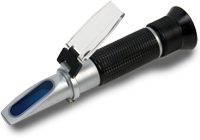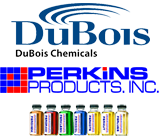Maintaining & Servicing Your Coolants
If you have questions please don’t hesitate to contact us. Our website should serve to answer many questions.
The Coolant Dance
Coolants perform a critical function in the machining process. Once we determine the proper coolant for your application, we will start you with a clean machine and then help you maintain the proper level of coolant going forward. The third component is to control contamination. Each customer is unique and we will work with you to provide predictable coolant performance and help you resolve common and not-so-common problems if they arise.
Laboratory Testing
Comprehensive testing of the makeup of your coolant can answer questions that elude simple tests such as refractometer readings or pH tests. If more extensive testing is needed we are happy to have samples analyzed by our lab to help find more difficult problems.
Coolant Concentrations
We want your life to be simple! Just dump in the coolant and get to work. However there are guidelines to follow that will go a long way towards making this dream a reality.
1. Mix products properly
Make sure you are starting with a clean machine.
When mixing manually, add the coolant to the water, not the water to the coolant.
Consider a variable mixing pump. We have found them very handy both when initially mixing and when doing your lower percent makeup.
2. Keep products at proper concentration through regular testing
Regularly test your coolant concentrations with a refractometer.
Your coolant concentration will likely increase through the evaporation of water. Your makeup should be added a lower concentration than that of your initial charge or you can end up with too much coolant.
3. Control contaminants
Tramp oils and metal chips and fines are most common, however there can be the occasional operators who introduce other contaminants into the system. Your job: control contaminants.
Using Your Refractometer
A manual refractometer is a prism with a plastic flap and a viewfinder. Lift the flap, apply a couple drips of coolant, close the flap and read the coolant scale. Simple.
 1. Calibrate
1. Calibrate
Your refractometer needs to be calibrated to your water source. Don’t be afraid, it’s simple.
- Locate and loosen the adjustment screw on your refractometer.
- On your clean lens apply a couple drops of water and close the flap.
- Look through the viewfinder and adjust your Brix reading to zero and tighten your adjustment screw. You are calibrated.
2. Test your coolant
From the machine spout by the tool put a couple drops of coolant on the prism. You can get the coolant from your sump, but you must be careful to minimize the tramp oil floating on the surface. You want to test the coolant, not the tramp oil. A blurry line on your refractometer is a sign that you may be testing too much tramp oil or that your coolant is ready for change.
3. Interpret
If your refractometer reading is at 5, then you might think you have a 5% solution, well almost. Most coolants have a multiplier.
Perkins Perkool 694-AL has a multiplication factor of 1.8, so if your refractometer reading is 5 you actually have a 9% solution (5 reading x 1.8 multiplier= 9% solution).
Dubios Pearl-Z 3452 has a multiplication factor of 1.11, so if your refractometer reading is 5 you actually have a 5.55% solution (5 reading x 1.11 multiplier= 5.55% solution). Its clear to see that it is important to know your multiplier.
Too Weak or Too Strong?
The most common tool to test the concentration of your coolant is the Brix scale refractometer. The test takes about 1 minute and will save you lots of time and money. In addition a pH tester is another handy tool as pH affects many components of your coolant. A lot of research goes into the formulation of high quality, safe coolants for good reason, use them properly.
Too strong coolant isn’t as effective as a proper mix. A higher concentration costs more money and more product is carried out with your chips. A higher concentrate can cause foaming, increased misting and leave an unnecessarily heavy film on parts. Also operator exposure is increased and can lead to dermatological reactions in some operators.
Too weak coolant is also less effective for more obvious reasons. Coolants provide lubrication and cooling for your tools and parts. They protect the surface of your parts and your expensive machinery from corrosion as well as extend tool life. They are also designed to minimize the effects of tramp oils.
